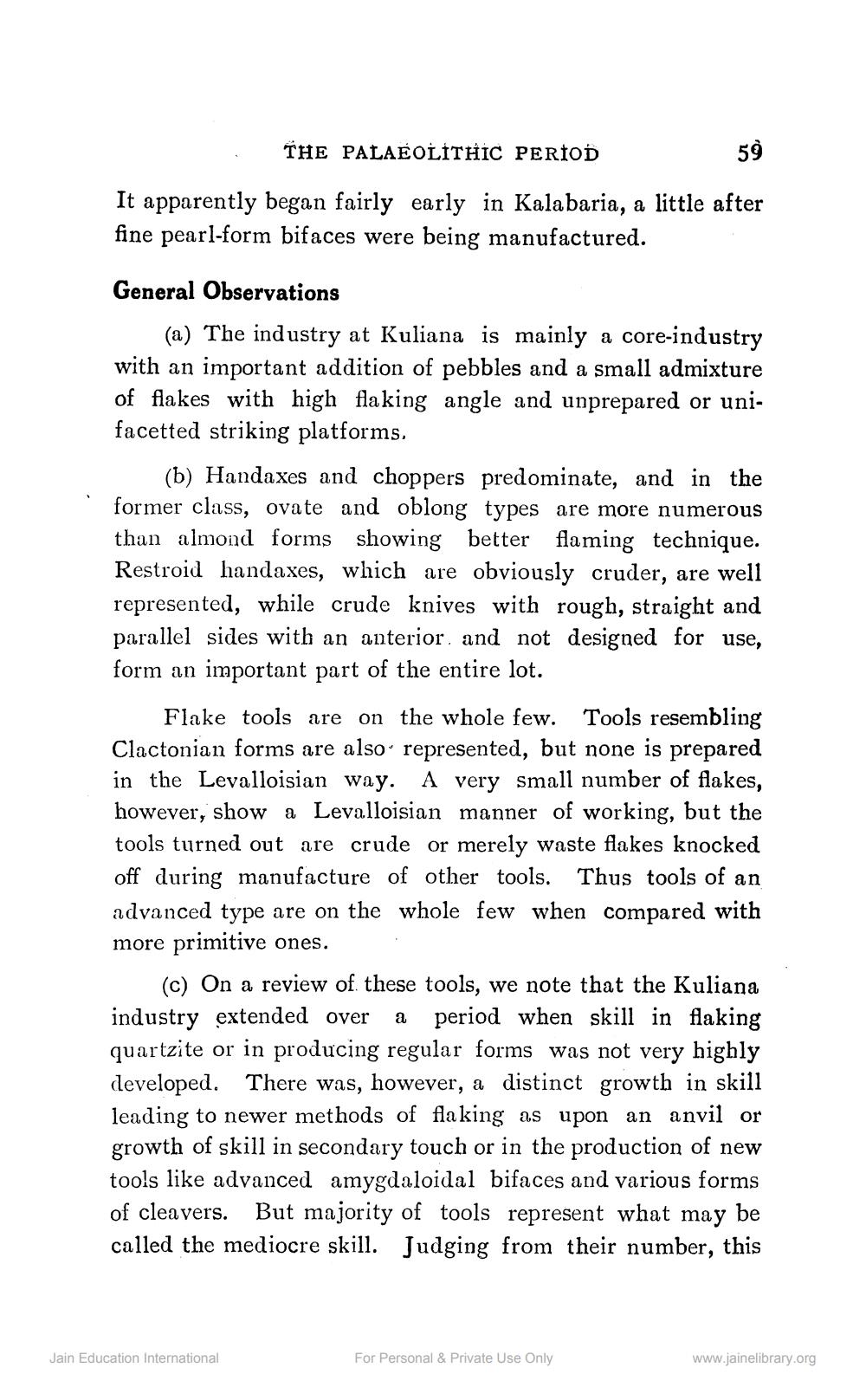________________
THE PALAEOLITHIC Period
59 It apparently began fairly early in Kalabaria, a little after fine pearl-form bifaces were being manufactured.
General Observations
(a) The industry at Kuliana is mainly a core-industry with an important addition of pebbles and a small admixture of flakes with high flaking angle and unprepared or unifacetted striking platforms.
(b) Handaxes and choppers predominate, and in the former class, ovate and oblong types are more numerous than almond forms showing better flaming technique. Restroid handaxes, which are obviously cruder, are well represented, while crude knives with rough, straight and parallel sides with an anterior. and not designed for use, form an important part of the entire lot.
Flake tools are on the whole few. Tools resembling Clactonian forms are also represented, but none is prepared in the Levalloisian way. A very small number of flakes, however, show a Levalloisian manner of working, but the tools turned out are crude or merely waste flakes knocked off during manufacture of other tools. Thus tools of an advanced type are on the whole few when compared with more primitive ones.
(c) On a review of these tools, we note that the Kuliana industry extended over a period when skill in flaking quartzite or in producing regular forms was not very highly developed. There was, however, a distinct growth in skill leading to newer methods of flaking as upon an anvil or growth of skill in secondary touch or in the production of new tools like advanced amygdaloidal bifaces and various forms of cleavers. But majority of tools represent what may be called the mediocre skill. Judging from their number, this
Jain Education International
For Personal & Private Use Only
www.jainelibrary.org




